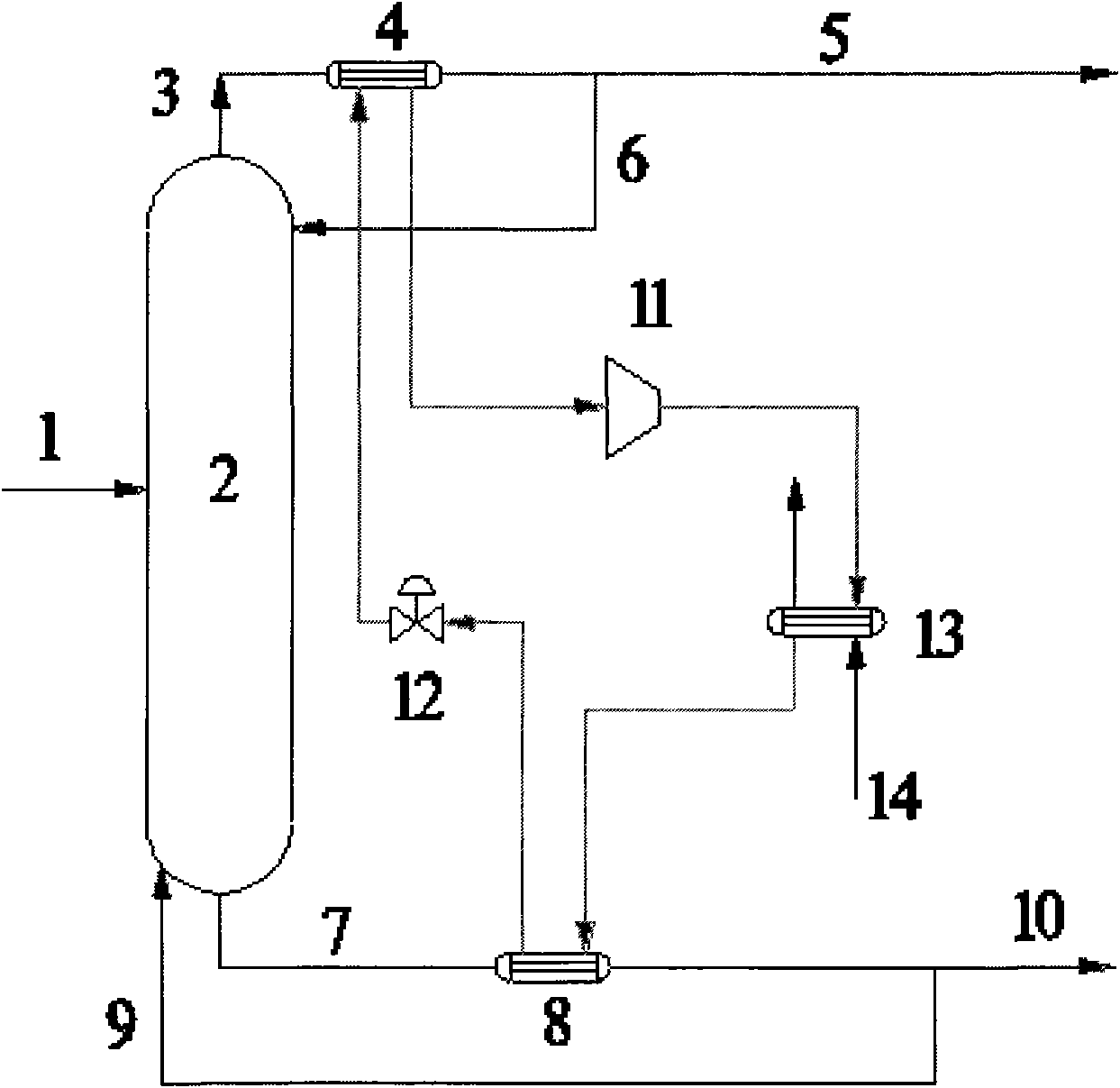Method for separating acetic acid and water
A technology of acetic acid dehydration and acetic acid aqueous solution, applied in the separation/purification of carboxylic acid compounds, organic chemistry and other directions, can solve the problems of high energy consumption of acetic acid dehydration and high equipment manufacturing cost
- Summary
- Abstract
- Description
- Claims
- Application Information
AI Technical Summary
Problems solved by technology
Method used
Image
Examples
Embodiment 1
[0026] use figure 1 As shown in the flow process, the acetic acid aqueous solution 1 (wherein the acetic acid concentration is 38% by mass) enters the acetic acid dehydration tower 2 from the middle, and after being separated by rectification, the gaseous phase stream 3 is obtained at the top of the tower, and the liquid phase stream 7 is obtained at the bottom of the tower; the stream 3 passes through the condenser 4 After heat exchange and condensation, it is divided into logistics 5 and logistics 6. Logistics 5 enters the follow-up process as the tower top product discharge, and logistics 6 returns to the top of acetic acid dehydration tower 2; after the heat exchange of reboiler 8, logistics 7 is divided into logistics 9 And logistics 10, logistics 9 returns to the bottom of 2, and logistics 10 enters the follow-up process as the output of the tower kettle product. The concentration of acetic acid in the discharge from the bottom of the acetic acid dehydration tower is gre...
PUM
 Login to View More
Login to View More Abstract
Description
Claims
Application Information
 Login to View More
Login to View More - R&D
- Intellectual Property
- Life Sciences
- Materials
- Tech Scout
- Unparalleled Data Quality
- Higher Quality Content
- 60% Fewer Hallucinations
Browse by: Latest US Patents, China's latest patents, Technical Efficacy Thesaurus, Application Domain, Technology Topic, Popular Technical Reports.
© 2025 PatSnap. All rights reserved.Legal|Privacy policy|Modern Slavery Act Transparency Statement|Sitemap|About US| Contact US: help@patsnap.com



